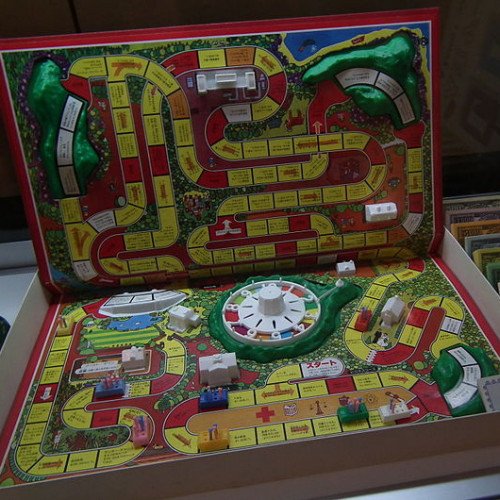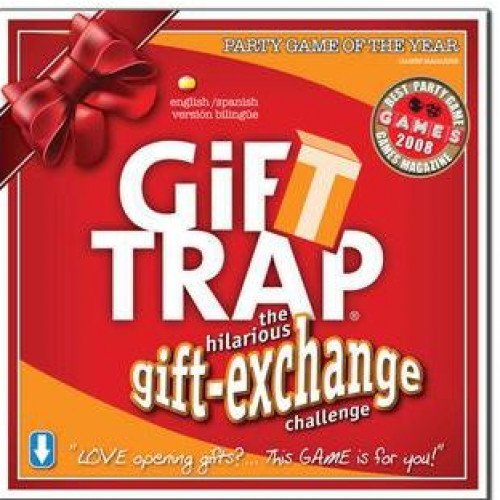"THE GAME OF LIFE" vs "GIFT TRAP"

THE GAME OF LIFE
The Game of Life, also known simply as Life, is a board game originally created in 1860 by Milton Bradley, as The Checkered Game of Life. The Game of Life was America's first popular parlor game. The game simulates a person's travels through his or her life, from college to retirement, with jobs, marriage, and possible children along the way. Two to four or six players can participate in one game. Variations of the game accommodate up to ten players. The modern version was originally published 100 years later, in 1960. It was created and co-designed by toy and game designer Reuben Klamer and was "heartily endorsed" by Art Linkletter. It is now part of the permanent collection of the Smithsonian's National Museum of American History and an inductee into the National Toy Hall of Fame. The game was originally created in 1860 by Milton Bradley as The Checkered Game of Life, and was the first game created by Bradley, a successful lithographer. The game sold 45,000 copies by the end of its first year. Like many 19th-century games, such as The Mansion of Happiness by S. B. Ives in 1843, it had a strong moral message. The game board resembled a modified checkerboard. The object was to land on "good" spaces and collect 100 points. A player could gain 50 points by reaching "Happy Old Age" in the upper-right corner, opposite "Infancy" where one began. Instead of dice – which were associated with gambling – players used a six-sided top called a teetotum.
Statistics for this Xoptio

GIFT TRAP
Gift Trap is a 2006 indie party board game, invented by Nick Kellet (based on an idea inspired by his eldest daughter in 2004). Gift Trap is billed as "The hilarious gift-exchange party game". Gift Trap relies on the players' personal knowledge of each other, requiring the matching of the right gift to the right person. Cards are dealt to the table depicting different gift items. Players use face-down tokens to mark the gifts they would give to each of the other players, and which gifts they would like to receive themselves. Tokens are then revealed, and players score according to the correlation of gifting and reception tokens. Madhouse Creative created the packaging and brand identity for the game. Images used for the gift cards in the game were licensed using a Creative Commons Attribution license; Crowdsourcing was used to collect images for use in the game via both a photo contest and through the use of online websites such as Flickr.com. Winners received a free copy of the game along with having their names included in the game. Gift Trap's website has always been an integral part of its story featuring contests and showing all the artwork for the gift images from the game in all the different languages. In 2009 a number of videos were added to communicate the fun aspects of exchanging gifts. This was extended by the addition of an Interactive video by Hustream to communicate the concept of the game and to feature the awards and content of the game.